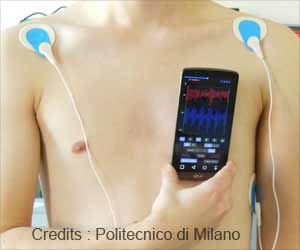The wearable sensor which can be worn as patches on the skin or incorporated into a person’s clothing, detects high levels of UV radiation that triggers melanoma.

The flexible sensor relies on ultra thin sheets of zinc oxide which is commonly used in sunscreens, as the UV sensing material. Zinc oxide is used in the form of very thin coatings over a hundred times thinner than a sheet of paper.
Lead author Philipp Gutruf said, “Thin zinc oxide layer is engineered with a plate-like structure that we call micro-tectonics, these plates can slide across each other bit like geological plates that form the earth’s crust allowing for high sensitivity and the ability to bend and flex the devices.”
The sensor is capable of detecting high levels of UV radiation, which can trigger melanoma and help remind people when they need to take a break from the sun.
The sensors can also be placed on work and safety gear to detect dangerous gases such as hydrogen, which could help warn workers in the event of a leak that could lead to an explosion.
Source-Medindia














